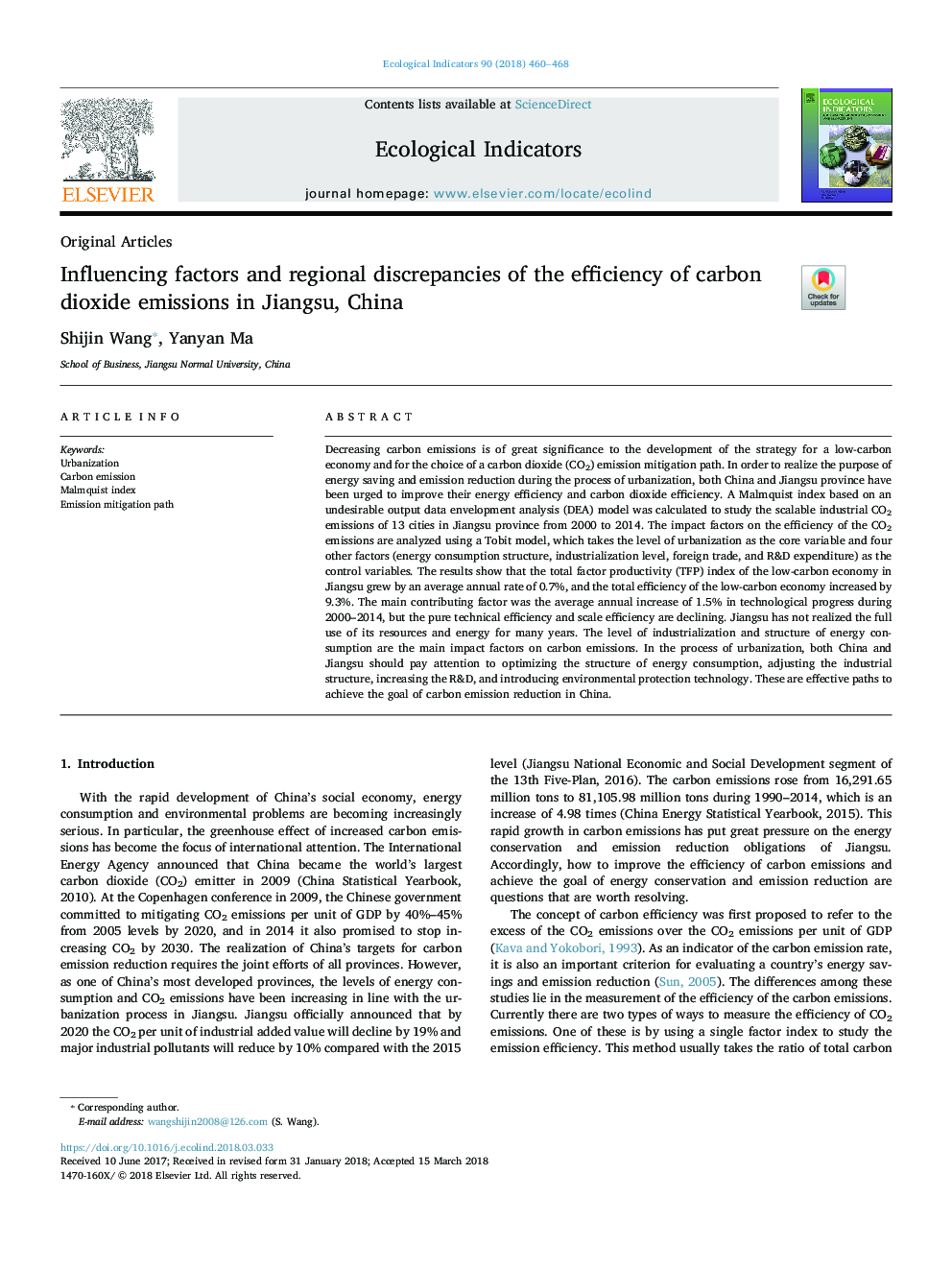| Article ID | Journal | Published Year | Pages | File Type |
|---|---|---|---|---|
| 8845451 | Ecological Indicators | 2018 | 9 Pages |
Abstract
Decreasing carbon emissions is of great significance to the development of the strategy for a low-carbon economy and for the choice of a carbon dioxide (CO2) emission mitigation path. In order to realize the purpose of energy saving and emission reduction during the process of urbanization, both China and Jiangsu province have been urged to improve their energy efficiency and carbon dioxide efficiency. A Malmquist index based on an undesirable output data envelopment analysis (DEA) model was calculated to study the scalable industrial CO2 emissions of 13 cities in Jiangsu province from 2000 to 2014. The impact factors on the efficiency of the CO2 emissions are analyzed using a Tobit model, which takes the level of urbanization as the core variable and four other factors (energy consumption structure, industrialization level, foreign trade, and R&D expenditure) as the control variables. The results show that the total factor productivity (TFP) index of the low-carbon economy in Jiangsu grew by an average annual rate of 0.7%, and the total efficiency of the low-carbon economy increased by 9.3%. The main contributing factor was the average annual increase of 1.5% in technological progress during 2000-2014, but the pure technical efficiency and scale efficiency are declining. Jiangsu has not realized the full use of its resources and energy for many years. The level of industrialization and structure of energy consumption are the main impact factors on carbon emissions. In the process of urbanization, both China and Jiangsu should pay attention to optimizing the structure of energy consumption, adjusting the industrial structure, increasing the R&D, and introducing environmental protection technology. These are effective paths to achieve the goal of carbon emission reduction in China.
Related Topics
Life Sciences
Agricultural and Biological Sciences
Ecology, Evolution, Behavior and Systematics
Authors
Shijin Wang, Yanyan Ma,
